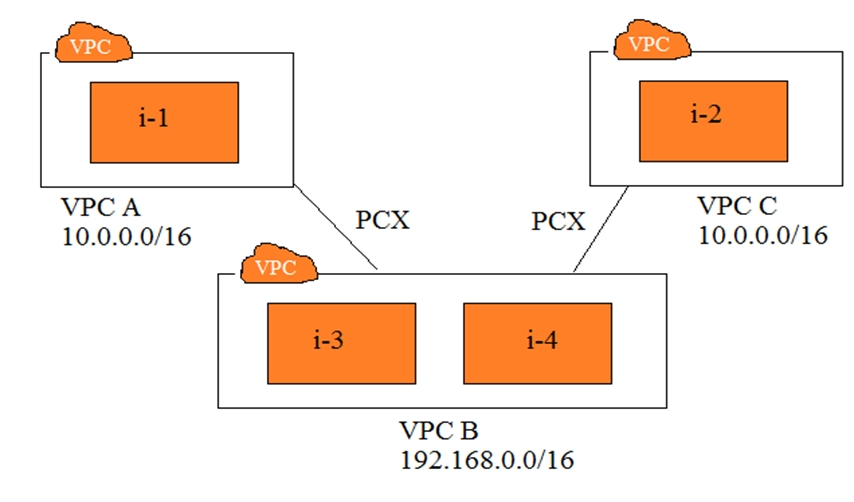

Refer to the image.
You have three VPCs: A, B, and C. VPCs A and C are both peered with VPC B. The IP address ranges are as follows:
✑ VPC A: 10.0.0.0/16
✑ VPC B: 192.168.0.0/16
✑ VPC C: 10.0.0.0/16
Instance i-1 in VPC A has the IP address 10.0.0.10. Instance i-2 in VPC C has the IP address 10.0.0.10. Instances i-3 and i-4 in VPC B have the IP addresses
192.168.1.10 and 192.168.1.20, respectively, i-3 and i-4 are in the subnet 192.168.1.0/24.
✑ i-3 must be able to communicate with i-1
✑ i-4 must be able to communicate with i-2
✑ i-3 and i-4 are able to communicate with i-1, but not with i-2.
Which two steps will fix this problem? (Choose two.)
asiansensation
Highly Voted 3 years, 9 months agoCyril_the_Squirl
3 years, 8 months agoslackbot
2 years, 2 months agoBKV83
Highly Voted 3 years, 5 months agoPavanKushwah123
Most Recent 2 years, 6 months agojoanneli77
2 years, 8 months agocannoe
2 years, 9 months agoquixo
2 years, 12 months agoquixo
2 years, 12 months agoshaji123
3 years agoRoyce341
3 years, 1 month agoCyril_the_Squirl
3 years, 8 months agoafantict
3 years, 8 months agoptpho
3 years, 8 months agoAshishBravo
3 years, 8 months agoStelSen
3 years, 8 months agoChauPhan
3 years, 9 months agoChauPhan
3 years, 8 months agovnsuk
3 years, 9 months agoTerrenceC
3 years, 8 months agoStelSen
3 years, 8 months agosapien45
3 years, 3 months agoHuntkey
3 years, 9 months agoHuntkey
3 years, 9 months agoStelSen
3 years, 8 months agodev62
3 years, 9 months agodoski
3 years, 9 months agoeeghai7thioyaiR4
3 years, 9 months ago